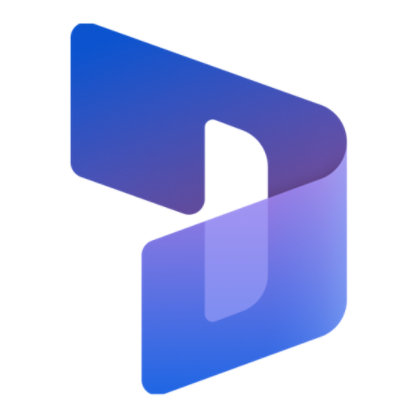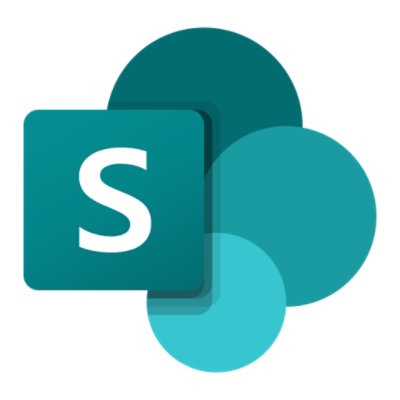Cornwall Council is a unitary authority with a revenue budget of over £1bn and 87 local councillors serving the 550,000 residents of Cornwall. In 2009, the council launched the Digital Cornwall initiative to bring together core data assets to enable vertical reporting. The council adopted Microsoft Azure Data Warehouse to build a strong foundation and support the scaling of their Microsoft Dynamics 365 Customer Insights solutions to create a golden record of employees and Cornwall residents, driving improved service delivery across the county and creating more connected citizen experiences.

“We already know we’ve cut our time by 50% using Microsoft Dynamics 365 Customer Insights. We’re looking forward to seeing how we can further improve that.”
Bob Bunce, Product Lead – Data & Insights, Cornwall Council
“Everything we do as a council has to be focused on our residents; the services they need and that they are requesting – and bridging the gap between those two things,” Julie Matraves, Information and Data Manager at Cornwall Council. “The starting point for that understanding has to be a citizen-centric approach with a single view of the truth.”
Stronger together: the vision of a Digital Cornwall
Cornwall Council is a unitary authority with a revenue budget of over £1bn and 87 local councillors representing the 550,000 residents of Cornwall. It delivers services to every community across the county. Following its establishment as a unitary authority in 2009, it launched the Digital Cornwall initiative.
“Digital Cornwall began with bringing our estate up to date and then started looking at more transformational activities,” explains Julie Matraves. “Now, we’re moving into outcome-based projects, breaking down the silos and utilising and milking the assets we’ve got, including the full Microsoft estate.”
The council wanted to bring together its core data assets – people, places and money – primarily to enable vertical reporting across the different directorates. The team chose to centralise their data in Microsoft Azure Data Warehouse and spent time developing the necessary skills, controls and governance to ensure a strong foundation.
“Now, we are starting to springboard into some forecasting, insight intelligence and citizen-centric and place-centric information,” states Bob Bunce, Product Lead – Data & Insights, Cornwall Council, “and ensuring that the data we have internally becomes more visible externally so we can support the whole county’s growth.”
Master Data Management
The council team wanted to find a solution that connected data across citizen-, place- and money-centric views to provide a single unified view.
The wealth of information the council holds is vast – from birth to death and everything in between. Bringing all the systems and data together from the six former Borough and District Councils meant the team were grappling with more than 600 source systems. To achieve this, the council began looking for a master data management (MDM) solution.
Bob Bunce recalls, “We were undecided on tools because there are so many out there. We’d been to a few Gartner conferences. We saw that fundamentally we needed a match and merge tool – rather than glossy front-end features. We soon realised that Microsoft Dynamics 365 Customer Insights would do what we needed it to. Plus, it’s much easier to set up in our environment, because it’s Azure-based.”
Starting with a single view of the employee
Cornwall Council found that setting up Microsoft Dynamics 365 Customer Insights was incredibly easy and time to value was extremely quick – which made a proof-of-concept test very manageable. “Rather than set off a project, we just turned it on and dedicated four weeks of resource,” says Bob Bunce.
The council leveraged a free 30-day trial of Dynamics 365 Customer Insights from Microsoft. It then compared the tool’s performance, accuracy and speed of use with coding the same match and merge rules manually on a subset of data: employee records.
“We just switched it on and got started,” says Selvi Nachiyar, Data Solution Designer at Cornwall Council partner. “The interface is easy to use and the documentation is very clear. We took three different data sources and found it to be straightforward to create a single employee profile with different attributes from the different data sources represented in a single screen. By comparing the results, we saw that the matching and merging was working as expected.”

Proactive use of the single view of employee record
By bringing the employee profile records together, including employed, contractor and external users of the council’s IT systems, the council team were able to compare this against their monitoring of the use of those systems. That enabled the council to compare different software licencing and different working styles with system use.
“We were able to identify people with long-term absences so we could harness the licence bucket better,” explains Bob Bunce. “We were able to release 600 licences sooner than we expected to. That’s a saving of £200k just on that first proof of concept over a period of about six-months – around a 400% ROI. It’s the ideal place to be – it’s self-funding and being able to do it quicker and move faster is a beautiful thing.”
The team has now developed a review report which flags up an extra trigger to optimise licencing. This is presented via Microsoft Power BI. “We used to review this manually every six months – and there’s some access risk associated with that,” adds Bob Bunce. “Now, we’ve got the ability to review it immediately at our fingertips.”
Finding the synergies across the Microsoft estate
“To have both feet in a Microsoft camp makes your life easier – rather than having different tools in different places,” says Bob Bunce. He estimates the professional services costs around setting up and testing a different MDM tool would be a six-figure sum.
“It’s not just the saving the tool has delivered – it’s the saving in professional services,” he emphasises, “It’s easier to transition across the different Microsoft tools than it is to pick up new technologies and utilise those. With Dynamics 365 Customer Insights, we lost nothing by switching it on and having a go. This is better than stepping into the unknown with a heavy price tag.”
The council is similarly leveraging other tools within their Microsoft suite of products to achieve its goals, Bob Bunce explains: “We use Power Automate to bring the data out of the Graph API for the Office 365 data. You can see how all our Microsoft technology starts to connect together. This component-based delivery means that we can choose from three tools and Dynamics 365 Customer Insights has its own connectors within it to enable your connection with these tools. It joins the tools together and enables us to leverage what we’ve got.”
Developing a single view of the citizen
The foundation for the council’s data ambitions is the single view of the citizen. Having proved the effectiveness of Dynamics 365 Customer Insights by creating the golden record of the employee, the next stage is to create a golden record for each Cornwall resident, pulling in data from all CRM systems.
These legacy CRM systems are slowly being migrated onto Microsoft Dynamics 365 to reduce the council’s technical debt and competency matrix. As it all comes together, the team will pull the data in Dataverse into Dynamics 365 Customer Insights to make alignment and real-time reflection easier.
Bob Bunce explains, “We needed to join the data from all these different source systems to match and merge into a single reference point. Our plan is to use Microsoft Dynamics 365 to republish this golden record. This makes the information accessible to our customer service teams and via our website. By hooking into Microsoft Dynamics 365, we present a combined ‘front door’ for the citizen to access and request services.”

A single view of debt
In addition to the single view of the citizen, the council is also developing a single view of debt, a single view of hardship and a single view of demand.
“We have to balance off the sustainability of the delivery of council services with what the citizens actually need, “says Bob Bunce. “There are a whole host of chargeable services we need to track, but we also need to reflect the citizen’s hardship position, because we know people are being stretched financially.”
Additionally, a single view of demand will also help to inform investment decisions, geographical provision of services and forecasting. Bob Bunce explains, “We’re using less human resource to gain the understanding of the interactions between different council services and relying more technical prowess – bringing that together with Microsoft Dynamics 365 Customer Insights.”
The future ambition of a Digital Cornwall
The council has a roadmap of improvements to be made by having a more joined up view across its data assets. The goal is to be able to use the information to join the widest remits of the council together. Being able to demonstrate value from the data and information work being undertaken as it progresses is essential, says Julie Matraves.
“Being a central team, we don’t own the data and we don’t own the processes around that data – so we want to hang an outcome off the work we do to ensure we get buy-in,” she says, “we want to do interesting development and show benefit at each stage.”
The team share possible use cases with their colleagues on the council’s SharePoint intranet. One early use case will be to cross-reference council tax records with the electoral roll to ensure discounts are fairly applied. It is estimated that this project alone could deliver £1m in savings back to the council to reallocate to its priorities. One such priority is child wellbeing. The council estimates that free school meal entitlement worth £1m is currently going unclaimed. Once this citizen data is incorporated into the tool with benefits data, the council can proactively reach out to those families to help reduce child deprivation and improve school performance and wellbeing.
Bob Bunce is clear about the goal: “We want to make it self-funding – to get some high-profile benefits in place and continuous – so that the data project seeds the fruit of its own labour. This will free us to explore some of the less revenue-generating opportunities to enhance our citizens’ experience in the county.”
Sharing Cornwall’s experience with other local authorities
Cornwall is keen to share its experience with other local government institutions and create communities of best practice. The team would highly recommend the use of Dynamics 365 Customer Insights as a fast and easy way to achieve a single view of citizens or employees, alongside other supporting technologies from Microsoft across Azure and the Power Platform.
“The hardest bit is getting the foundation in place,” says Bob Bunce, “but once it is, reutilising the logic will enable a faster delivery. We already know we’ve cut our time by 50% using the tool. We’re looking forward to seeing how we can further improve that.”
“We’ve taken the leap. We’ve proven a lot of this doesn’t need to be done manually. We’re starting to see the benefits,” agrees Julie Matraves, “My advice to other councils is to be brave!”
“If in doubt, just get a trial licence and have a go,” recommends Bob Bunce. “I think people shout about different benefits across different tools, but with Dynamics 365 Customer Insights, you can unify your data very quickly and achieve fast time to value and insight. Having a go will answer more questions and teach you more about single citizen views than readying any blogs or whitepapers.”
“Being able to demonstrate value from the data and information work being undertaken as it progresses is essential for creating a single golden view to better serve the citizens of Cornwall.”
Julie Matraves, Information and Data Manager, Cornwall Council
Beginning September 1, 2023, Dynamics 365 Marketing and Dynamics 365 Customer Insights will merge into a single offering under Dynamics 365 Customer Insights. Learn more about the evolution of Dynamics 365 Customer Insights by visiting here.
Explore related stories
Fuel innovation with Microsoft

Talk to an expert about custom solutions

Drive results with proven solutions










Follow Microsoft